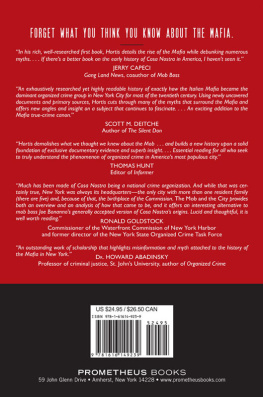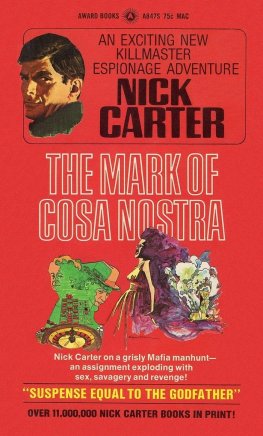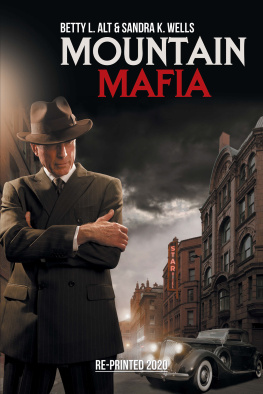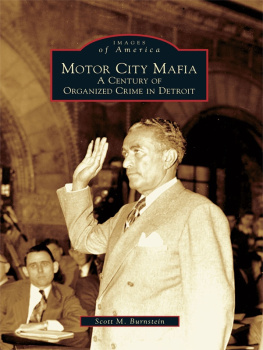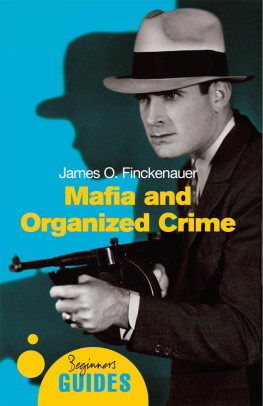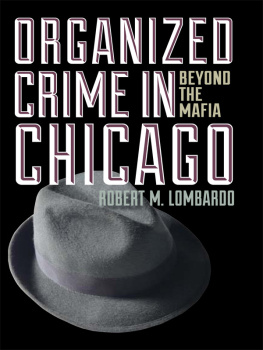
Researching this book was terrific fun. The book was built on primary sources, so I must first acknowledge the archivists. I am particularly grateful to Leonora Gidlund, Marcia Kirk, Kenneth Cobb, and Dwight Johnson of the New York Municipal Archives; William Davis of the National Archives in Washington, DC; Michael Desmond of the John F. Kennedy Presidential Library; Keith Swaney of the New York State Archives; Ellen Belcher of the John Jay College of Criminal Justice; Mattie Taormina of Stanford University; George Rugg of the University of Notre Dame; Lori Birrell of the University of Rochester; Michael Oliveira of the ONE National Gay & Lesbian Archives; and Patrizia Sione and Kathryn Dowgiewicz of the Kheel Center for Labor-Management Documentation and Archives. Special thanks to Chris Magee for locating cases at the National Archives at Kansas City. I also appreciate the help of the staffs of the Enoch Pratt Free Library in Baltimore, Maryland, and the Library of Congress in Washington, DC.
New and old friends contributed to this book. Christina M. Gentile was my Italian-language translator, and Ted Pertzborn was the graphics artist for the maps. I received support and assistance from Ryan Artis, John Binder, David Critchley, Josh Dowlut, Mario Hortis, Jacqueline Janowich, Meirong Liu, Will Meyerhofer, Arthur Nash, Lennert van't Riet, and Nathan Ward. I would also like to thank Greg Cross, Chris Mellott, and Colleen Mallon, my former colleagues, for allowing me to work part-time while completing the book. My agent Scott Mendel is the best consigliere anyone could have in the publishing world.
Prometheus Books is a wonderful place for authors. Editor-in-Chief Steven L. Mitchell improved the book with his editing. Grace M. Conti-Zilsberger designed the beautiful cover. Thanks also to Brian McMahon, Lisa Michalski, Mark Hall, and Melissa Ra Shofner.
My high school teacher Mr. Gerald Gerads first turned me on to history, and Professor Peter Rachleff introduced me to primary-source research. Professor James Jacobs of New York University School of Law, the nation's foremost scholar on the mob, started me on the path to this book back in 1998. He has been extraordinary generous over the years. This book could not have been finished without Thomas Hunt and Richard Warner. Tom Hunt contributed his eye for detail and shared sources from his own book DiCarlo: Buffalo's First Family of Crime. My honorary coauthor Rick Warner read the entire manuscript and offered invaluable suggestions.
Above all, I thank my parents, Bati and Linda, Mom and Kent. They have shown me the meaning of unconditional love.

Archival Sources
John F. Kennedy Presidential Library and Museum, Boston, MA
Joseph Valachi Papers, 1964
Records of Robert F. Kennedy, 19571963
John Jay College of Criminal Justice, Lloyd Sealy Library, New York, NY
Trial Transcripts of the County of New York, Court of General Sessions, 18831927
Kheel Center for Labor-Management Documentation and Archives, Ithaca, New York
Records of International Ladies Garment Workers Union, Transcript in People against Macri
National Archives and Records Administration, College Park, MD
Records of the Department of State, Files of Suspected Narcotics Traffickers, 19231954
Records of the Federal Bureau of Investigation, 18961996
Records of the Federal Bureau of Narcotics, 19151946
Records of the Federal Bureau of Prisons, Case Files of Notorious Offenders, 19191975
Records of the United States Secret Service, Daily Reports of Agents, 18751936
National Archives and Records Administration, New York, NY
Records of the United States Court of Appeals for the Second Circuit
Records of the United States District Court for the Southern District of New York
National Archives and Records Administration, Washington, DC
Records of the Special Committee to Investigate Organized Crime in Interstate Commerce
Records of the Senate Permanent Subcommittee on Investigations
New York Municipal Archives, New York, NY
Kings County District Attorney, Murder, Inc., Case Files, 19401945
Lucky Luciano Closed Case File, 1936
New York Police Department Files on Albert Anastasia Case, 19541963
New York County District Attorney Records, Closed Case Files, 18951966
Office of the Chief Medical Examiner, Death Records, 19181946
Records of Mayor Fiorello LaGuardia, Subject Files, 19341945
New York State Archives, Albany, NY
Master Files of the New York State Temporary Commission of Investigation on Apalachin
Records of the Department of Correctional Services
Stanford University, Department of Special Collections, Stanford, CA
Federal Bureau of Narcotics Agent George White Papers, 19321970
University of Notre Dame, Rare Books and Special Collections, Notre Dame, IN
Federal Bureau of Narcotics Agent Max H. Roder Journals, 19311959
University of Rochester, Department of Special Collections, Rochester, NY
Governor Thomas E. Dewey Papers, Prison Reports of Charles Luciano
Wisconsin Historical Society, Madison, Wisconsin
International Brotherhood of Teamsters, Chauffeurs, Warehousemen and Helpers of America Records, 19041952
Books
Abadinsky, Howard. Organized Crime, 10th ed. (Belmont, CA: Wadsworth, 2013).
Anderson, Annelise. The Business of Organized Crime: A Cosa Nostra Family (Stanford, CA: Hoover Institution Press, 1979).
Bell, Daniel. The End of Ideology (New York: Collier Books, 1961).
Block, Alan A. East Side, West Side: Organizing Crime in New York, 19301950 (Piscataway, NJ: Transaction Publishers, 1983).
Bonanno, Joseph, with Sergio Lalli. A Man of Honor: The Autobiography of Joseph Bonanno (New York: Simon and Schuster, 1983).
Capeci, Jerry, and Gene Mustain. Mob Star: The Story of John Gotti (Indianapolis: Alpha, 1988).
Carter, David. Stonewall: The Riots That Sparked the Gay Revolution (New York: St. Martin's, 2010).
Courtwright, David, et al. Addicts Who Survived: An Oral History of Narcotic Use in America, 19231965 (Knoxville: University of Tennessee Press, 1989).
Critchley, David. The Origin of Organized Crime in America: The New York City Mafia, 18911931 (New York: Routledge, 2009).
Dash, Mike. The First Family: Terror, Extortion, Revenge, Murder, and the Birth of the American Mafia (New York: Simon and Schuster, 2009).
Dickie, John. Cosa Nostra: A History of the Sicilian Mafia (New York: Palgrave MacMillan, 2004).
Federal Writers Project. New York City Guide (New York: Random House, 1939).
Fiorentini, Gianluca, and Sam Peltzman, eds. The Economics of Organised Crime (Cambridge: Cambridge University Press, 1995).
Flynn, William J. The Barrel Mystery (New York: J. A. McCann, 1919).
Fox, Stephen. Blood and Power: Organized Crime in 20th-Century America (New York: Penguin Books, 1990).
Gambetta, Diego. Codes of the Underworld: How Criminals Communicate (Princeton, NJ: Princeton University Press, 2011).
Gentile, Nicola. Vita di Capomafia (Rome: Editori Riuniti, 1963).
Goldstock, Ronald, Director, and James B. Jacobs, Principal Draftsman. Corruption and Racketeering in the New York City Construction Industry: The Final Report of the New York State Organized Crime Taskforce
Next page
